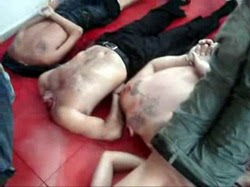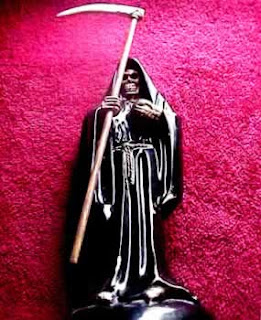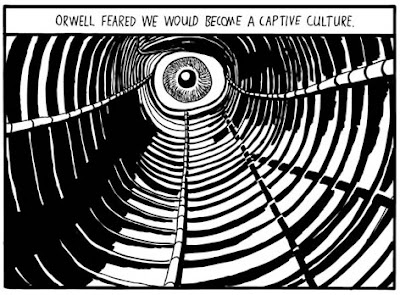
La década de los 70 fue un tiempo en que los ecos de Mayo del 68 aun anidaban en los cerebros de una inconformista juventud occidental. Fue una época en donde la radicalización se hizo mas violenta y mas firme. Hubo brotes de guerrillas urbana y terrorismo en varios países de Europa. En Italia aparecieron Las Brigadas Rojas y en La Republica Federal Alemana, el insólito grupo de la Fracción del Ejercito Rojo, en alemán, La Rote Armee Fraktion, una organización de características ultraizquierdista, que sembraría el terror entre la clase dominante de la opulenta Alemania de los 70. Uno de los lideres mas destacado de este grupúsculo armado fue la periodista y activista Ulrike Meinhof columnista durante 10 años de Konkret, un modesto periódico de izquierda. En aquellos años la compleja realidad de una Alemania dividida empezó a entrar en crisis entre 1966 y 1969, debido a una fuerte etapa de recesión económica. Esto interrumpió el llamado proceso de expansión del llamado milagro económico alemán. Por otra parte el partido social demócrata alemán, SPD, al formar gobierno en 1966 se descantó por una política expansiva y privatizadora.

Esto fue interpretado como una traición al mundo del trabajo, lo cual motivó que los estudiantes y sectores de trabajadores tendieran a las protestas en las calles. Una muestra de rechazo al nuevo gobierno Social Demócratas se dio con la visita a Alemania del Sha de Irán en el 2 de Junio de 1967. Al final de una manifestación contra tal visita, la policía mató de un disparo a un estudiante ajeno a las protestas. El año siguiente un obrero anticomunista disparó contra el líder estudiantil Rudi Dutschke, hiriéndole gravemente. Esto cambió de forma radical la forma de luchar de Ulrike Meinhof. Fue a partir de ese momento cuando la lucha armada se instaló en sus planteamientos. Más fue en Mayo de 1970 cuando la vida de Ulrike dio un giro total. Ése mes apoyó la operación de rescate de Andreas Baader, que cumplía condena de tres años por la quema en 1968 de unos grandes almacenes comerciales en Frankfurt. A partir de ahí se sucedieron los atracos a bancos, de esa forma se afianzo el grupo de la Baader Meinhof. El grupo tenia inspiración marxista leninista. Su ataques al Estado pretendía incitar a una insurrección de masas. La verdad es que no contaron con el apoyo masivo de la disciplinada población alemana. Durante sus casi 10 años de existencia, este grupo asesinó a 35 personas, incluyendo a varios soldados norteamericanos y policías alemanes. Entré sus acciones mas sonadas tenemos el asesinato del fiscal general Siegfried Buback el 7 de Abril de 1977; el 30 de Julio de 1977 asesinaron al presidente del Dresdner Bank Jurgen Ponto; el 13 de Octubre secuestraron un Boeing 737 de la Lufthansa, asesinando a su capitán. Un comando especial de la policía finalmente mató a los cuatros secuestradores.

El 5 de Septiembre de 1977 secuestraron al presidente de la Asociación Alemana de Industriales, Hannas Martin Schleyer, un ex nazi y ex oficial de las temidas SS. Este elemento fue el ultimo comandante con mando en la ciudad ocupada de Praga en 1945. Ante la negativa del gobierno alemán a liberar a miembros de la Rote Armee Fraktion, el grupo terrorista ejecutó a Schleyer en el 18 de Octubre de 1977. Ulrike Meinhof murió el 9 de Mayo de 1976 a los 41 años. Fue encontrada colgada de los barrotes de la ventana de su celda de máxima seguridad. El gobierno alemán lo calificó como un suicidio. Lo mas grave fue que un año mas tarde en la cárcel de alta seguridad de Stammhein, se suicidaran también los otros componentes de este grupo terrorista, que eran Andreas Baader, Gudrun Ensslin, Inmargd Moller y Jan Carl Raspe. En el caso de Inmargd Moller, ella logró sobrevivir a su intento de suicidio. Estas muertes levantaron una gran e indignada polémica en todo el mundo, púes para muchas personas se trató de un crimen de Estado, ya que de de las cuatro persona suicidadas, dos presentaban disparos de balas, y las otras dos una acuchillada y otra ahorcada. En sí, todos los componentes y simpatizantes eran de clase acomodada, lo que vulgarmente se dice revolucionario de salón y caviar, pero aun así es una gran diferencia comparado con estos nuevos tiempos de mansedumbre y adoración a Facebook, digo yo.

The decade of the 1970s was a time during which the echoes of May 1968 still had a place in the minds of the idealistic Western youths. It was a time where the radicalization became more violent and more severe. There were outbreaks of urban guerrilla warfare and terrorism in several European countries. In Italy there was the Red Brigade and in the Federal Republic of Germany, the unusual group called the Red Army Fraction, or in German, the Rote Armee Fraktion, an ultra left wing organization, which spread terror among the dominant class of the opulent during the 1970s in Germany. One of the most outstanding leaders of this armed activist group was the journalist and activist columnist Ulrike Meinhof during 10 years of Konkret, a modest left wing newspaper. During those years, there existed the complex reality of a divided Germany that was entering into crisis between 1966 and 1969, due to a severe phase of economic recession. This interrupted the so-called process of expansion of the so-called German economic miracle. At the same time the Social Democratic German party, SPD, when it formed its Government in 1966, opted for a policy of expansion and privatisation.
This was interpreted as a betrayal of the laborers, which motivated students and sectors of workers to protests in the streets. An example of the rejection of the new Social Democrats occurred during the visit to Germany of Shah of Iran on June 2, 1967. At the end of the demonstration against the visit, the police killed a student that did not play a role in the protests. The following year, an anti-Communist worker shot the student leader Rudi Dutschke, wounding him seriously. This radically changed the form of the struggle of Ulrike Meinhof. It was during this time that armed warfare became part of his methods. It was during the month of May 1970 when the life of Ulrike went through a complete twist. That month he supported the rescue operation of Andreas Baader, who was serving a three year sentence for the burning in 1968 of a commercial department store in Frankfurt. This was followed by bank robberies which would provide security to the Baader Meinhof group. The Group drew its inspiration from Marxist-Leninist ideology. His attacks on the State was intended to incite an insurrection of the masses. The truth is that he could not count on the massive support of the disciplined German population. During its 10 years of existence, this group killed 35 people, including several German and American soldiers and police. Among their most talked-about actions was the assassination of prosecutor general Siegfried Buback on 7 April 1977; on July 30, 1977 they murdered the President of Dresdner Bank Jurgen Ponto; on October 13 they hijacked a Boeing 737 of Lufthansa, killing its pilot. A special police commando killed the four hijackers in the end.
On September 5, 1977 they kidnapped the President of the German Association of Industrialists, Hannas Martin Schleyer, a former Nazi and former officer of the feared SS. This criminal was the last Commander who held the post in the city of Prague in 1945. In retaliation to the refusal of the German Government to free members of the Rote Armee Fraktion, the terrorist group executed Schleyer on October 18, 1977. Ulrike Meinhof died on May 9, 1976 at the age of 41. She was found hanging from the bars of the window of her maximum security cell. The German Government called it a suicide. More serious was that a year later in the high security prison in Stammhein, the other members of this terrorist group also committed suicide; they were Inmargd Moller, Jan Carl Raspe, Andreas Baader and Gudrun Ensslin. In the case of Inmargd Moller, she survived her suicide attempt. These deaths led to wide spread and heated controversy throughout the world; for many people this was a crime of the State, because among the four suicides, two had bullet wounds, and the other two had knife wounds and another was choked. All the constituents and supporters of this group came from the middle-upper class, commonly known as the revolutionaries of good life and caviar, but nonetheless are still worlds apart from the present, which is symbolised by meekness and worship of Facebook!































